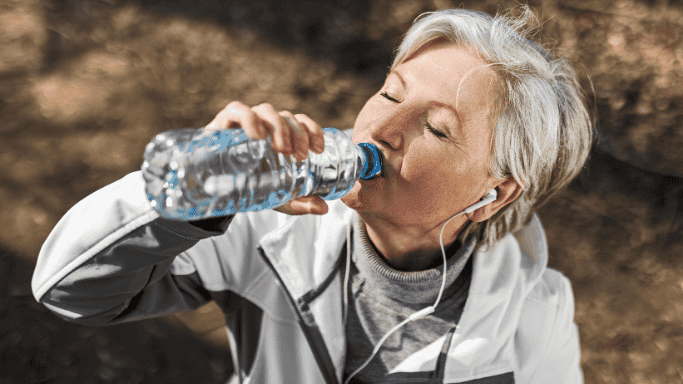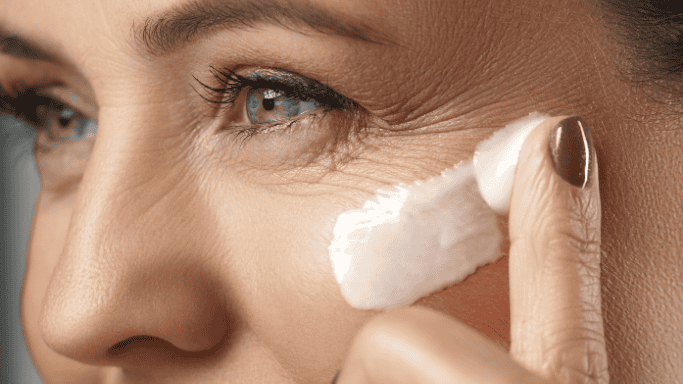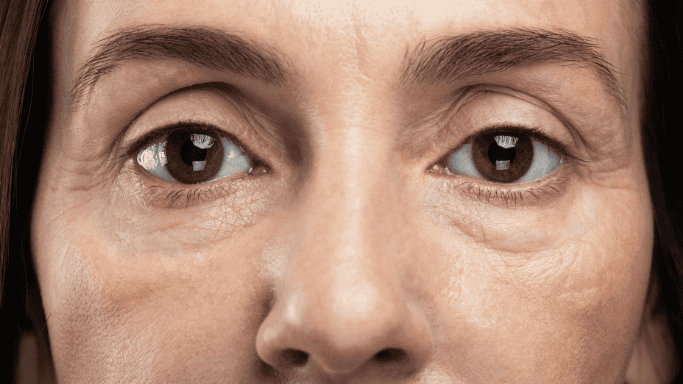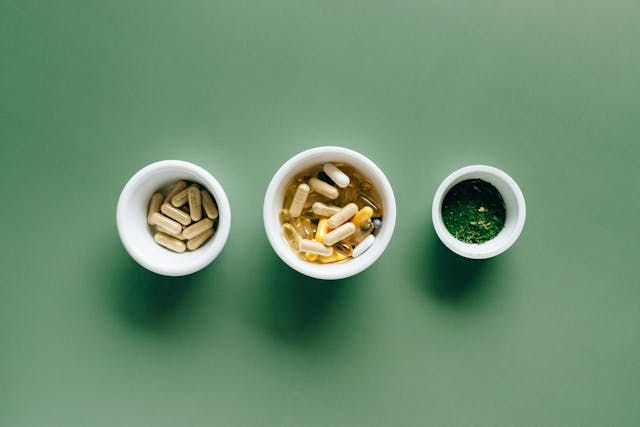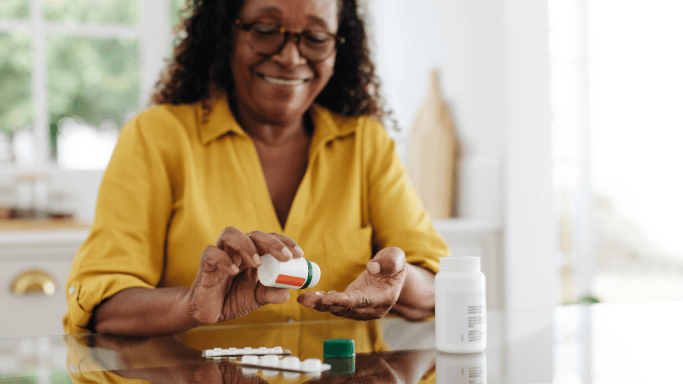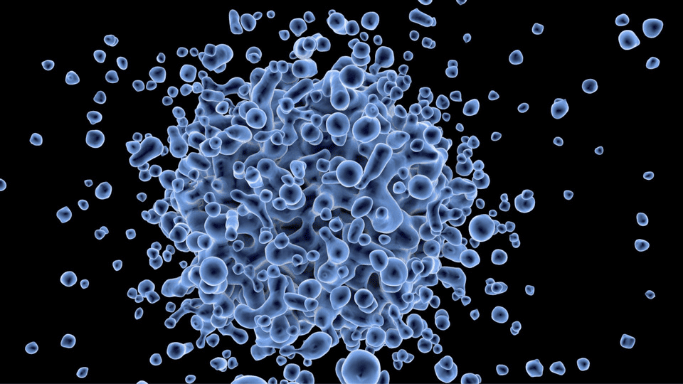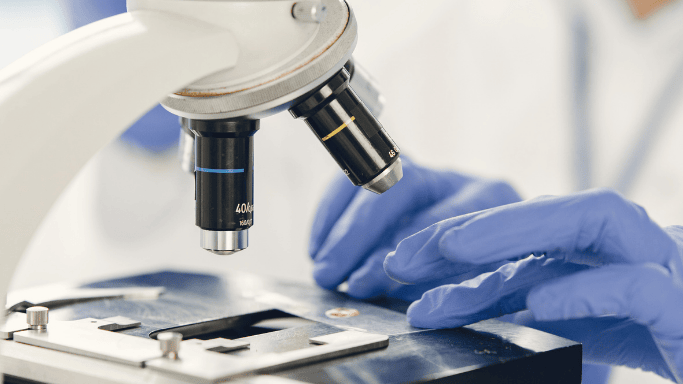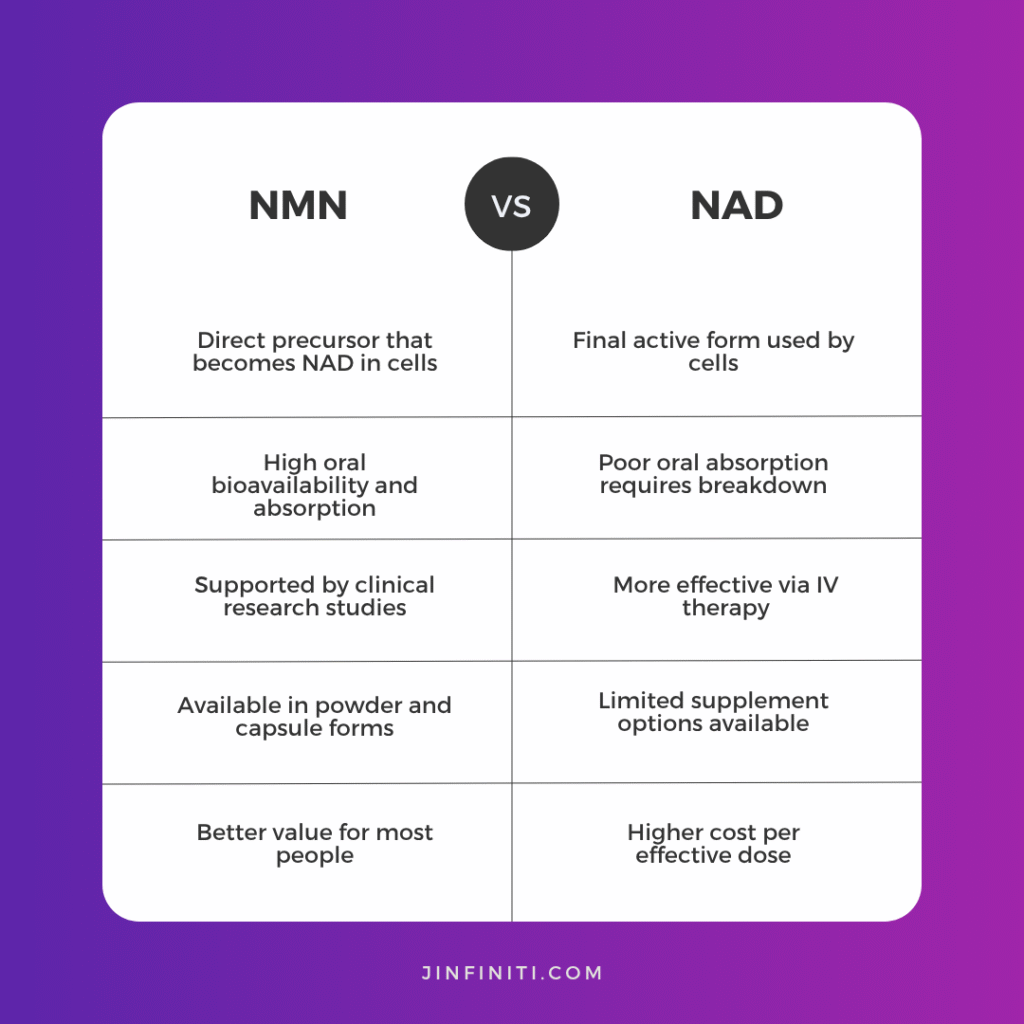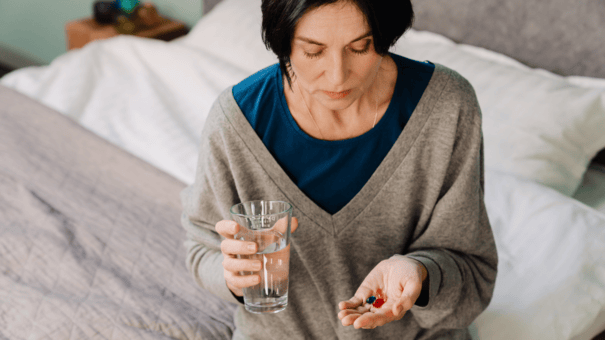Creatine and Caffeine: A Science-Based Guide
Creatine and caffeine stand as two of the most researched performance supplements available today. These powerhouse compounds work through completely different pathways in your body, yet both can dramatically improve your workouts and mental performance.
Whether you’re hitting the gym, competing in sports, or just want sharper focus throughout your day, understanding how these supplements work can help you make smarter choices about your health routine.
Key Takeaways
- Timing matters most: Avoid caffeine during creatine loading, then combine strategically
- Different strengths: Creatine boosts power and muscle growth; caffeine enhances endurance and focus
- Both are safe: Decades of research confirm excellent safety profiles at recommended doses
- Start simple: 3-5g creatine daily, 200-400mg caffeine pre-workout for most people
Understanding How Creatine and Caffeine Work
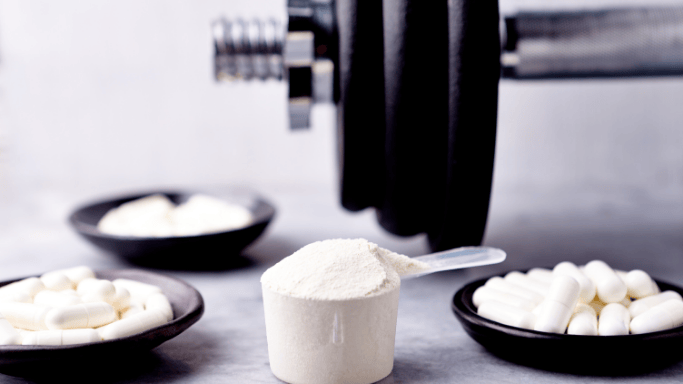
Your body uses different fuel systems during exercise and daily activities. Creatine and caffeine tap into these systems in unique ways, which explains why many athletes and fitness enthusiasts use both.
Benefits of Creatine for Your Body
Creatine serves as your muscles’ rapid energy backup system. When you lift weights or sprint, your muscles burn through ATP (the body’s energy currency) incredibly fast. Creatine supplementation helps regenerate ATP almost instantly, giving you more power for those crucial moments.1
Research shows the benefits of creatine extend far beyond the gym:
- Muscle Growth: Studies find creatine supplementation increases lean body mass by 1.14 kg compared to training alone
- Brain Power: Cognitive research demonstrates improved memory and executive function2
- Recovery: Reduced muscle damage and faster recovery between training sessions
- Energy: Enhanced cellular energy production throughout your body
Beyond physical performance, creatine ranks among the top brain health supplements supported by science.
Your muscles store about 95% of your body’s creatine. Creatine monohydrate supplementation can boost these stores by up to 30%, translating to measurable performance gains.
Benefits of Caffeine for Performance
Caffeine works primarily through your nervous system by blocking adenosine receptors. Adenosine makes you feel tired, so when caffeine blocks these signals, you feel more alert and energized.
The effect of creatine happens at the cellular level, while caffeine influences your brain and nervous system. This explains why caffeine may enhance different aspects of performance:
| Creatine | Caffeine |
|---|---|
| Primary Target: Muscle cells | Primary Target: Nervous system |
| Energy System: ATP-PCr pathway | Energy System: Reduces fatigue perception |
| Onset: 1-2 weeks to saturate | Onset: 30-60 minutes |
| Duration: Long-term cellular changes | Duration: 3-6 hours |
| Best For: Power, strength, muscle growth | Best For: Endurance, focus, alertness |
Caffeine Performance Benefits:
- Endurance: Research consistently shows improved endurance at 3-6 mg/kg body weight3
- Focus: Better reaction times and decision-making under pressure
- Fat Burning: Enhanced fat oxidation during exercise
- Perceived Effort: Exercise feels easier, allowing you to push harder
Mixing Creatine and Caffeine: What Science Says
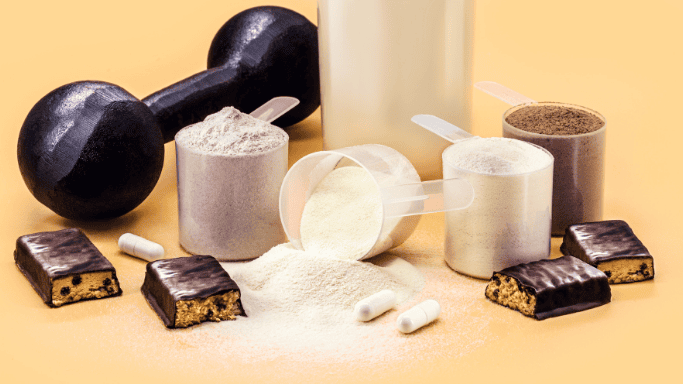
The interaction between these supplements has sparked considerable scientific debate. Early studies suggested potential conflicts, but recent research provides clearer guidance.
Research Combining Creatine and Caffeine
Current evidence shows the relationship depends heavily on timing. When you take both supplements matters more than whether you take them at all.4
Three key findings emerge from recent studies:
- Loading Phase: Avoid caffeine during initial creatine loading for best results
- Acute Use: Caffeine after creatine loading doesn’t interfere with performance benefits
- Chronic Use: Long-term concurrent supplementation may reduce creatine’s effectiveness
The International Society of Sports Nutrition acknowledges both supplements as safe and effective when used properly.
Timing Matters
Strategic timing maximizes benefits while minimizing potential interactions. Here’s what works best:
Week 1-2: Creatine Loading
- Take 20g creatine daily (split into 4 doses) OR 3-5g daily
- Avoid caffeine supplements during this phase
- Focus on saturating muscle creatine stores
Week 3+: Maintenance Phase
- Continue 3-5g creatine daily
- Add caffeine 30-60 minutes before workouts
- Use caffeine strategically for specific training sessions
This approach lets you harness concurrent supplementation benefits without compromising either supplement’s effectiveness.
Optimal Dosing for Both Supplements
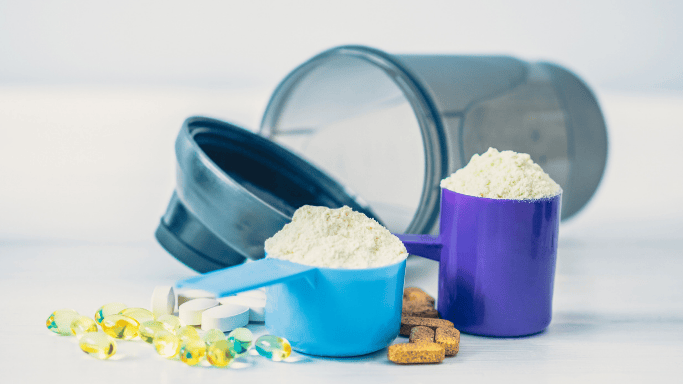
Getting the dosage right makes the difference between seeing results and wasting money. Both supplements have well-established protocols backed by decades of research.
| Supplement | Loading Phase | Maintenance | Timing | Duration |
|---|---|---|---|---|
| Creatine | 20g/day (4x5g) | 3-5g/day | Anytime | Ongoing |
| Creatine | Alternative: 3-5g/day | 3-5g/day | Anytime | 4-6 weeks to saturation |
| Caffeine | N/A | 3-6mg/kg | 30-60 min pre-exercise | As needed |
For creatine, you can choose between rapid loading (1 week) or gradual loading (4-6 weeks). Both achieve the same muscle saturation levels, but loading gets you there faster.
A 150-pound person should aim for 200-400mg caffeine pre-workout. Start with the lower end and adjust based on your tolerance and response.
Our creatine starter guide covers detailed loading protocols for beginners.
Caffeine Supplements: When and How Much
Caffeine timing significantly impacts both performance and sleep quality. Your body processes caffeine with a half-life of 3-6 hours, meaning afternoon caffeine can disrupt nighttime sleep.
Optimal Caffeine Schedule:
- Morning: 100-200mg with breakfast
- Pre-workout: 200-400mg, 30-60 minutes before exercise
- Cut-off: No caffeine after 2 PM for better sleep
Athletic performance research shows caffeine’s sweet spot falls between 3-6 mg per kilogram of body weight. Going higher doesn’t improve results and increases side effect risk.
Taking Creatine and Caffeine Together Safely

Both supplements boast excellent safety profiles when used appropriately. Understanding potential side effects helps you use them confidently and effectively.
Creatine Safety:
- Over 685 clinical trials show no significant side effects5
- Modest water retention (0.5-1.0 liters) during loading is normal
- No kidney damage in healthy individuals
- Safe for long-term use up to 30g daily
Despite decades of research, creatine myths about safety persist. The science consistently shows excellent tolerability across all populations.
Caffeine Considerations:
- Generally safe up to 400mg daily for healthy adults
- Pregnant women should limit intake to 200mg daily
- Monitor for anxiety, sleep disruption, or jitteriness
- Individual sensitivity varies due to genetic factors
- Muscle relaxation time isn’t significantly affected by either supplement when used at recommended doses.
Red Flags to Watch For:
- Persistent digestive issues with creatine
- Sleep problems lasting more than a few days with caffeine
- Anxiety or rapid heartbeat
- Any unusual symptoms
For targeted cellular energy support, consider supplements that combine these pathways intelligently. Jinfiniti’s Creatine + ATP provides 4g of creatine monohydrate with 400mg of disodium ATP, supporting both immediate energy and longer-term cellular function.
Special Considerations for Different Groups

Your age, sex, and health status influence how you respond to these supplements. Personalizing your approach based on these factors optimizes results.
Women and Hormonal Factors: Recent research suggests women may benefit more from creatine supplementation. Women typically have 70-80% lower natural creatine stores, making supplementation potentially more impactful.
Hormonal fluctuations during menstruation and menopause may affect creatine needs. Studies show women often experience greater cognitive benefits from creatine supplementation.6
Learn more about creatine for women and specific considerations.
Aging and Cognitive Performance: Both supplements show particular promise for older adults. Creatine combined with resistance training enhances muscle mass gains in people over 50.
Cognitive performance benefits appear especially pronounced in aging individuals, with improvements in memory and processing speed. However, older adults may need lower caffeine doses due to increased sensitivity.
Athletes and Competitors: Choose products certified by NSF International or Informed Sport to avoid banned substances. The timing strategies become even more critical for competitive athletes.
Consider how your training schedule aligns with supplementation timing. Creatine’s benefits become more apparent during high-intensity training phases.
The Bottom Line on Caffeine and Creatine

Exercise performance can improve when you use creatine and caffeine strategically. The key lies in understanding their different mechanisms and timing your intake appropriately.
Start with creatine loading for 1-2 weeks without caffeine. Once your muscle creatine stores are saturated, add caffeine before specific workouts where you need that extra edge.
Both supplements offer benefits beyond exercise. Creatine supports brain health and cellular energy, while moderate caffeine intake may provide cardiovascular protection.
At the cellular level, these supplements work alongside your body’s natural energy production systems. For complete metabolic enhancement, consider how creatine and caffeine integrate with NAD+ optimization to support the fundamental energy pathways that power every cell in your body.
The science strongly supports both supplements for improving athletic performance, cognitive function, and overall health when used correctly. Start conservatively, monitor your response, and adjust based on your individual needs and goals.
Remember that supplements work best when combined with proper nutrition, adequate sleep, and consistent training. These fundamentals remain the foundation of any successful performance or health optimization program.
Referenced Sources:
- https://journals.lww.com/10.1519/JSC.0000000000004862 ↩︎
- https://pmc.ncbi.nlm.nih.gov/articles/PMC5469049/ ↩︎
- https://link.springer.com/10.1007/s40279-023-01870-9 ↩︎
- https://pmc.ncbi.nlm.nih.gov/articles/PMC9315598/ ↩︎
- https://journals.humankinetics.com/view/journals/ijsnem/25/6/article-p607.xml ↩︎
- https://pmc.ncbi.nlm.nih.gov/articles/PMC5469049/ ↩︎









